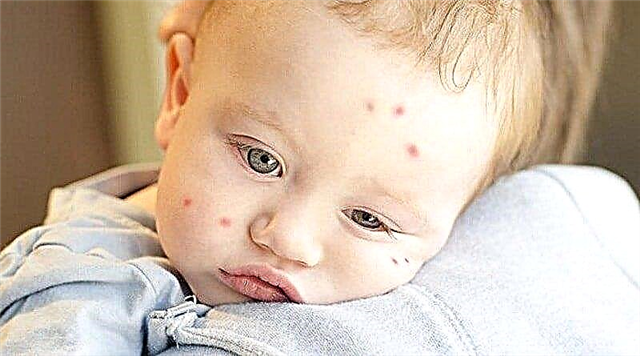For the timely detection of rickets and adjustments to vitamin D therapy, the Sulkovich test is used. The analysis is prescribed for newborns and older children. In the first case, morning urine is used, and urine is collected from older babies per day. If the result shows a deviation from the norm, the pediatrician will choose treatment or recommend new tests.

Baby
What Analysis Determines
Urine analysis according to Sulkovich in infants is intended to determine the amount of calcium. The study is carried out visually, the digital value of the indicator is not calculated. The baby's urine is mixed with a reagent developed by Sulkovich. It contains oxalic acid, which reacts with the calcium salts present in urine. As a result, crystals are formed, the liquid becomes cloudy or remains transparent. Calcium concentration is determined by the volume of sediment not soluble in urine. The more transparent the liquid, the less it is contained.
Note! It is not difficult to decipher the analysis. The result may not reveal calcium, while the turbidity is completely absent. Further, the assessment is carried out using points, each corresponds to "+". There are four of them maximum.
When an analysis is prescribed for newborns
Urine analysis according to Sulkovich infants are prescribed in the following cases:
- The baby is expected to have rickets. Usually it is associated with a lack of vitamin D. It is recommended to give it to children from the second month of life to prevent the disease. For medicinal purposes, it is used when observing signs of rickets: severe sweating in the baby and the appearance of a sour smell. Then the dose of the drug is increased;
- The baby gets more vitamin D than the norm. An overdose is dangerous for the baby, therefore, it is impossible to independently increase the number of drops taken in small drops;
- To oversee vitamin D treatments;
- The child is suspected of dysfunction of the thyroid gland. In this case, hormones can be produced in both insufficient and excess amounts. Accordingly, hypothyroidism and hyperthyroidism are diagnosed.
Sulkovich analysis is a preliminary way to confirm or deny the existence of a problem. If the pathology is really noticed, additional tests are prescribed, the purpose of which is to give not a qualitative, but a quantitative characteristic.
How to properly collect urine
To complete the picture, the child's daily urine is required. But it is extremely difficult to collect urine from babies in a day. Therefore, the first morning urine is taken for the screening test. The baby should not be given food before collecting the material, otherwise the research results cannot be considered accurate and reliable.

Material
How to collect a urine test according to Sulkovich in a baby:
- Prepare a disposable container. Sterile jars are available at pharmacies. They do not need to be washed and taken out in advance. The package is opened immediately before use and the lid is unscrewed. You should try not to touch the inside of the container with your fingers;
- Wash your hands with soap and water. Wipe dry;
- Wash the baby;
- Keep the jar ready. It will not be possible to agree with the baby to go to the toilet at the right time. Babies usually pee when the diaper is removed. You can lightly massage the abdomen in the bladder area. It's good if you can put the container under the stream and skip the first portion. Urine bags help in collecting material. The devices are attached with adhesive tape to the skin of the crumbs and do not cause inconvenience. They are versatile, as well as designed specifically for boys and girls, given their anatomical features. As soon as the baby pees in the bag, the urine must be poured into a sterile container and tightly closed. Before that, you will have to look after the child, because if he rolls over, all the contents will pour out of the device, and you will have to start over. If the baby has already begun to be planted in the pot, you can prepare for the analysis with its help. Before the procedure, you need to wash it well, as soon as the baby goes to the toilet, pour the urine into a clean jar;
- Deliver the material to the laboratory within two hours. There is no need to open the container. Make sure that the lid is tightly closed.
Note! The result depends on the preparation for the analysis. If the collection technique is violated, the study cannot be called reliable. Its result is doubtful if the baby ate a lot of calcium-rich foods the day before, or takes medications that increase the concentration of the element in the urine.

The baby eats a lot of foods that contain calcium
Where the research is done
After collecting urine, it must be taken to the laboratory. Analysis according to Sulkovich is an inexpensive study carried out in any medical organization, paid and public. A referral can be given by a pediatrician after examining the baby if he notices symptoms of rickets.
How long to wait for results
The research is carried out quickly, after 1-2 days you can get the result. If deviations are noticed, then the treatment is prescribed or corrected, other tests are recommended to make the result more concrete.
How to decipher the analysis result
According to the results of the Sulkovich test, it is established whether there is a balance between the elements in the body of the crumbs.
Decoding helps to determine if therapy and continuation of the examination are required:
- At normal calcium levels, the liquid is slightly cloudy. On the form, laboratory technicians put "+" or "++". The child does not need treatment, he is healthy. If therapy was carried out, then it is considered successful;
- A negative result means that no sediment was seen in the urine. It remained transparent. In this case, "-" is marked, or "0 points" is written. This shows that there is not enough calcium in the baby's body. He needs to receive it in large volumes, otherwise there is a risk of developing rickets. It can also lead to deterioration of tooth enamel. If the baby has already started rickets, this will affect the appearance. So, the ribs begin to protrude in the crumbs, the shape of the head changes (it becomes square). A large fontanelle indicates a lack of calcium. It gradually decreases as the infant grows older, and closes completely by 12-24 months. At monthly check-ups, doctors always check whether its size corresponds to the age norm. A negative test result may indicate that the infant's thyroid gland is not producing enough of a hormone responsible for the exchange of calcium and phosphorus. In this case, hypocalcemia is diagnosed;
- Large amounts of calcium are indicated by "+++" or "++++", depending on the degree of turbidity in the urine. In this situation, babies usually have additional symptoms, in particular, weakness, nausea, apathy. In severe cases, arrhythmia occurs, children can lose consciousness. With a high calcium content, the work of the digestive system, heart, lungs is hampered. The baby's metabolism slows down, it grows slowly. Severely turbid urine is a sign of an overdose of vitamin D, the development of hyperthyroidism. The crumbs' thyroid gland produces too much parathyroid hormone. Because of this, calcium is washed out of the skeletal system and then leaves the body along with urine. A baby against the background of these processes may experience renal colic, develop urolithiasis. Improper functioning of the thyroid gland leads to slow development of the baby, his rapid fatigue, arrhythmias. To determine the level of the hormone, you will have to take a blood test.

The baby donates blood
Are deviations from the norm dangerous
Deviations from the norm are usually associated with an excess or lack of vitamin D. The doctor will adjust the dose taken by the infant. After a while, the analysis is repeated to see if there is a positive trend.
Note! If a child has alarming symptoms, changes in behavior, daily routine, body shape, he is constantly sleeping, additional examination should be carried out immediately.
For the body, the crumbs are dangerous both a lack of calcium and its excessive amount. In the latter case, the element begins to be absorbed into the bone tissue, as a result, the child's movements are disrupted. This process is easier to prevent than to stop. In addition, the high calcium content disrupts digestion, leads to constipation, vomiting. It may indicate the development of diabetes mellitus, the presence of kidney stones, gall bladder. If no pathology is found in the child, it is necessary to adjust his menu - perhaps the lack or excess of calcium is explained by the products that are constantly present in the child's diet.
Upon receiving abnormal results, the doctor prescribes treatment. The imbalance between the elements in the body cannot be ignored, otherwise it can lead to irreparable consequences.

Baby at the doctor
When a doctor suspects that a child has rickets, urine is prescribed according to Sulkovich, how to collect from a baby depends on his age. For newborns, it is convenient to use urine bags, an older baby can be put on a pot. It is important to take morning urine, you can feed the baby immediately after he goes to the toilet. The Sulkovich test is an inexpensive and quick test that allows you to assess whether there is enough calcium in the baby's body, or too little.



